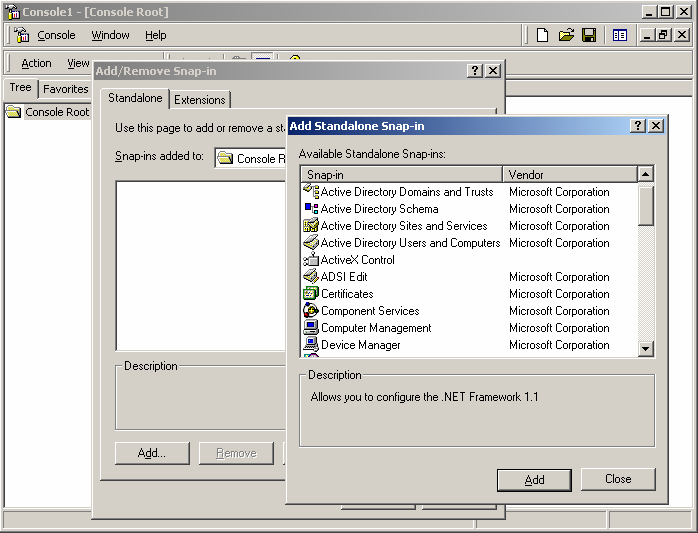Home

Write your own exam questions
Microsoft Management Console
Many system tools for Windows are found in the Control Panel, and in particular in the Administration Tools applet. These tools all have a familiar look and feel about them. The reason for this is they based around a Console layout and the tools them selves snap in (Hence they are known as snapins) and can be configured with other tools.
Using the Microsoft Management Console
To launch an empty console go to run and type mmc

- What are snap-ins?
- What is the file extension of a snap-in?
- What is a MMC?
NTFS user rights assignment and Object permissions.
Files and folders in a Journaling File System like NTFS have their permission embedded with them. These tables of permissions are known as ACL's or Access Control Lists. You can modify these in the properties of the object. By making changes you can Permit or Deny individuals or groups access on various levels.
- How are Users and Groups Different?
- What is inheritance?
- Where do you go to set security on files and folders in NTFS?
- Do you know some of the basic permission settings available?
- What are ACLs?
- What are three default Windows Groups?
- What is a Sector?
- What is a Cluster?
- What is Slack?
- What process recreates the track and sector structure of a HDD?
Advanced File/Folder Permissions
It is rarely necessary to check Advanced Authorization Options, but it allows a more precise control of effective permissions. Here's a complete list of Special Permissions:
We will create some examples from this site in class.
Drive imaging or cloning.
Cloning is the process of capturing an image of a hard drive sector by sector, so it can be put on another drive effectively replicating the drive and data.
When preparing to clone multiple machines, best practice suggest building a model PC and thoroughly testing it. Any software requirements should be installed, the volume defragmented and checked, and virus tested. The model machine should be tested by a member of staff that will eventually be using the machines to discover individual preferences within the guidelines of the company.
Because images capture a drive sector by sector, they hold information which is related to the hardware of the model machine. The image would only be practical for machines of similar specification unless you are prepared to re-install drivers on the cloned machines.
Images can be installed from a CD, DVD or across a network to multiple computers (known as Multicasting)
- Cloning is one term for the process, name two others?
- Describe best practice when preparing to clone.
- Why is an image suited a specific type of PC?
- How is the image size smaller than the volume size?
Software updates
Critical software updates and patches - Usually security related. You should keep a diary of updates to keep abreast of critical updates.
Non-critical software updates and patches - Often minor non essential corrections. 'Let a sleeping dog lie!' - Evaluate each update on merit.
Further reading
Ghost SupportTroubleshooting NTFS permissions